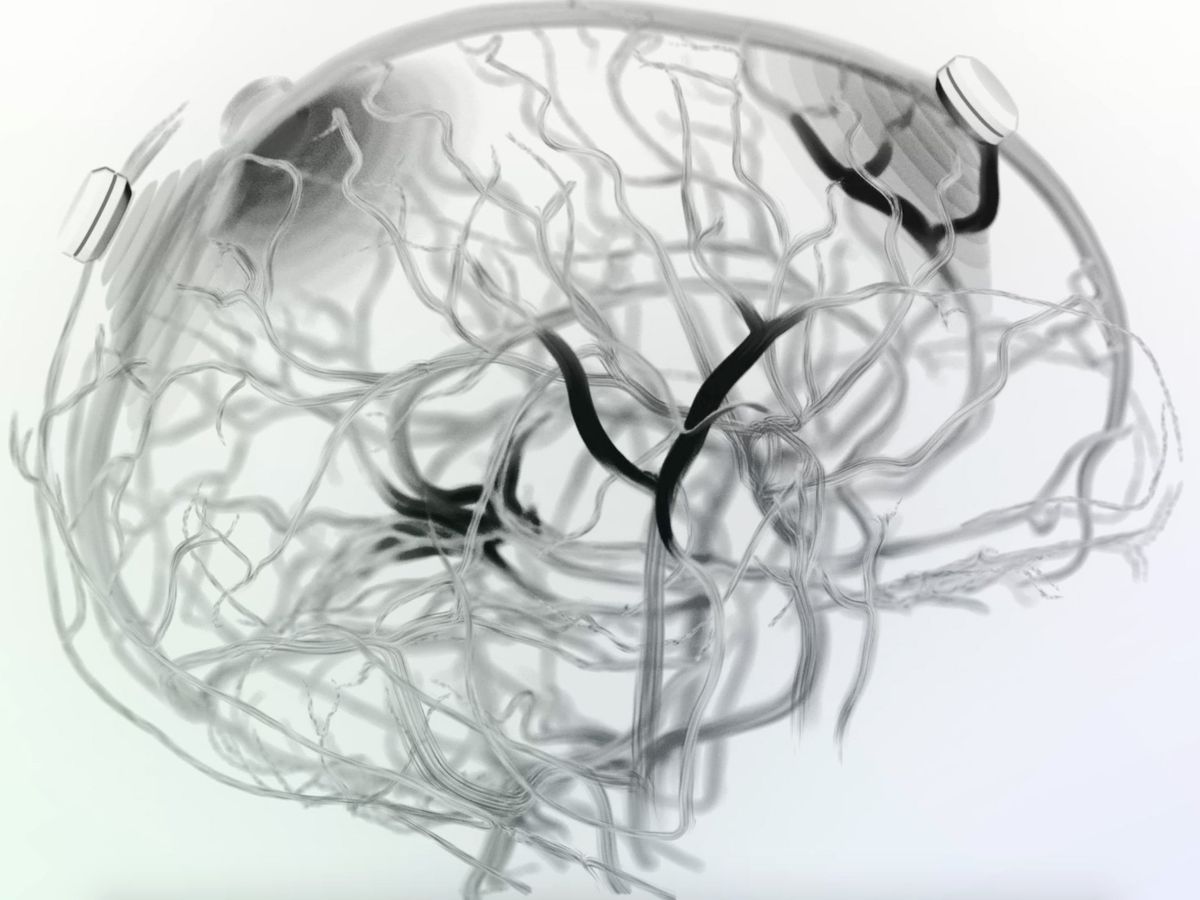2023 has been a year chock-full of developments in brain-computer interface (BCI) technology: devices that can decode brain signals and use them to control an external device, or use a device to alter brain signals. BCI developers Neuralink, Paradromics, and Synchron all reached important milestones in the clinical trial process, each bringing a fully implantable BCI a little closer to clinical reality in the United States. Those companies are developing BCIs that interact with the brain electrically, but a recently announced research collaboration is developing a BCI that uses a radically different medium: ultrasound.
In October, the companies Forest Neurotech and Butterfly Network announced a US $20 million joint research effort to pursue the development of an ultrasound-based BCI. Forest Neurotech will license Butterfly Network’s compact ultrasound-on-a-chip technology to develop a minimally invasive ultrasound BCI device for use in academic and research settings.
Most BCI systems measure brain activity by reading out electrical signals, and some also electrically stimulate the brain. Forest’s proposed device will instead use high-frequency sound waves to interface with the brain. The scientific principles guiding the approach are unusual but simple: Direct focused ultrasound (FUS) waves can change neurons’ action potentials—the ionic currents the brain cells use to communicate with each other. Ultrasound can also be used to estimate neural activity within brain regions by measuring local changes in blood flow via the doppler effect; that technique is known as functional ultrasound imaging (fUSI).
Forest Neurotech CTO William Biederman says that Butterfly’s technology will allow his team to build a BCI that, when implanted in the user’s skull, will use ultrasound to stimulate and record from the brain “with submillimeter accuracy.”
Why use ultrasound in a BCI?
Ultrasound has certain benefits over other neural stimulation and imaging techniques. For stimulation, focused ultrasound waves can flexibly target specific regions throughout the brain from outside the skull. In contrast, electrical stimulation techniques are more spatially limited because electricity does not travel very far through brain tissue, so electrically stimulating deep regions of the brain requires invasive surgical procedures that place electrodes near the relevant sites. Electrically recording from the brain requires either deep implants or electrodes on the scalp that can record activity only from brain regions near the surface. Recording deep neural activity via ultrasound can’t be done through the skull, but it can be done by removing a piece of skull and laying the device on the surface of the brain.
Butterfly’s ultrasound hardware places the audio generation, steering, and recording capabilities of larger clinical ultrasound systems onto a single chip-size device. Forest plans to use these ultrasound chips to stimulate brain regions with steered and focused ultrasound waves, and also to measure neural activity with fUSI.
Butterfly Network’s ultrasound-on-a-chip technology will be used in a new brain-computer interface.youtu.be
The fUSI technique estimates changes in neural activity by measuring changes in blood flow. Neurons, like all cells, need blood to function. Increases in neural activity require increases in blood flow, which fUSI techniques measure by projecting ultrasound at a brain region of interest and recording the waves that bounce back. When sound bounces off of a mass of flowing blood, the returning sound waves wiggle at a different frequency than those emitted. fUSI uses this Doppler shift phenomenon to estimate changes in blood flow and, by proxy, the electrochemical chatter of neurons.
“Using blood flow to image neural activity with functional ultrasound works really well,” says Mikhail Shapiro, an advisor to Forest Neurotech and professor at the California Institute of Technology. “It works much better than anybody expected when the idea was first put forward.”
Ultrasound can both record and control neural activity. While the latter phenomenon has been known since at least the 1950s, scientists still aren’t sure exactly why FUS makes neurons fire. Recent experiments in which ultrasound energy was directed at isolated brain tissue from rodents showed neuroscientists that particular calcium ion channels appear to be thrown open by high-frequency sound waves, though the exact physics of that interaction are still a mystery.
To both stimulate and record with its BCI, Forest’s system will require implanting multiple Butterfly ultrasound chips in a user’s skull. While ultrasound stimulation is effective through bone, fUSI recording techniques are not. Sound is muffled when passing through the skull, and the outgoing and return attenuations make a fully noninvasive ultrasound recording system untenable. Instead, the company plans to place the transducers into the skull and flush with the surface of the dura, a protective membrane that covers the brain.
The collaboration between Forest and Butterfly is a part of Butterfly Network’s larger Butterfly Gardens program, which seeks to make its technology available to medical-device teams. Forest Neurotech, a part of the nonprofit group Convergent Research, is focusing on technological development rather than creating and marketing of a clinical device. “Within the lifetime of our nonprofit research organization, we don’t have plans to submit to the FDA,” says Biederman. “We are trying to drive fundamental scientific discovery and uses of this type of technology.” Once the technology is more developed, the company plans to make it available to other research organizations in academia and industry for further product and scientific development.Michael Nolan is a writer and reporter covering developments in neuroscience, neurotechnology, biometric systems and data privacy. Before that, he spent nearly a decade wrangling biomedical data for a number of labs in academia and industry. Before that he received a masters degree in electrical engineering from the University of Rochester.



